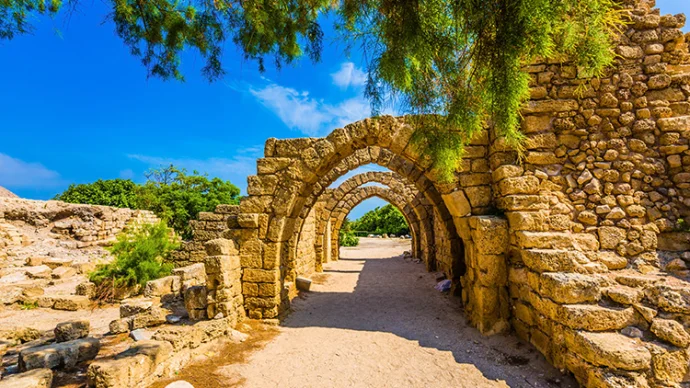
About Beit She’an
The ancient city of Beit She’an in the northern Jordan Valley is an immensely impressive archaeological site with remains dating back mostly to the Roman and Byzantine period.
History of Beit She’an
The site itself has an extensive history dating back to around the 5th millennium BC and was a significant settlement by the Bronze Age period. During the Late Bronze Age, when the Egyptians ruled the area, Beit She’an served as the administrative centre of the region.
As the Egyptians lost control of the region, around the 12th century BC, the Egyptian city was destroyed by fire and a Canaanite city rose in its place, before the Philistines conquered the area. It was during this period that Beit She’an gained a Biblical reference when the Israelites under King Saul were defeated at the Battle of Mount Gilboa – it is said that the body of Saul was hung from the city’s walls, along with the bodies of his sons. The city was then captured by the Israelite king David and formed part of the Israelite kingdom until its destruction by the Assyrians in 731 BC.
Following this period the city was later re-founded as a Hellenistic settlement and was known as Nisa Scythopolis. As with many of the ancient cities in the area Beit She’an was later incorporated into the Roman Empire and survived under Roman and later Byzanine rule for several centuries; it was one of the ten cities of the Decapolis league. Most of the remains of Beit She’an which can be seen today date back to this period, which is when the city reached its zenith with a population approaching 50,000 by the 5th century AD.
The city continued to function after the 7th century Arab conquest, despite seeing a decline in its prominence and size. However, it was not war or man-made destruction which signalled the end of Beit She’an, rather a major earthquake which struck the region in 749 AD and devastated the city. There were subsequent periods of occupation after this event – including a period of Crusader rule which saw the construction of a Crusader castle – but the ancient city itself fell into ruin.
Beit She’an today
Today visitors to the site can explore the remains of ancient Beit She’an (also called Bet She’an, Beth Shean or Bet Shean) which sits on the eastern side of the modern city of the same name.
Among the ruins are the impressive colonnaded main street (known as Paladius Street), parts of the defensive walls, the reconstructed Roman theatre, an ancient amphitheatre, Byzantine bathhouse and even structures dating back to the Egyptian and Canannite periods, such as a large Canaanite temple and the ancient house of the Egyptian governor. The remains of the Crusader castle can also be visited as well as a Mamluk-era mosque.
Alongside the ruins sits the Biblical Mount Gilboa, which affords excellent views of the surrounding area, and visitors can also purchase tickets for the impressive sound-and-light experience which is run at the site.
Getting to Beit She’an
Beit She’an is about 10km north of Israel’s border with the West Bank, just off Route 90. It’s roughly a 40 minute drive to Nazareth or an hour’s drive to Haifa. Bus 411/12 runs from Afula to Beit She’an quite regularly: you’ll need to change buses here if you’re coming from further afield.
Featured In

Roman Ruins Israel
Owing to it once being occupied by the Romans under Pompey the Great, Israel is home to a number of fascinating Roman ruins. Here's our selection of 10 Roman sites in Israel that any ancient history fan should visit.

Israel Historic Sites
An country with a diverse religious, cultural, and political history, Israel is home to a number of striking sites which are essential for any visitor wanting to understand the rich history of the area. Here's our pick of 10 which you shouldn't miss.




















